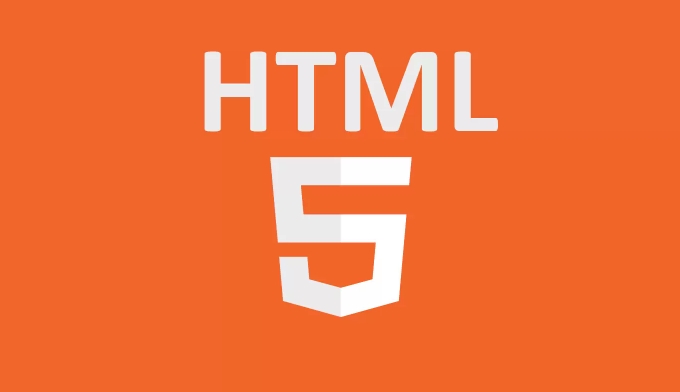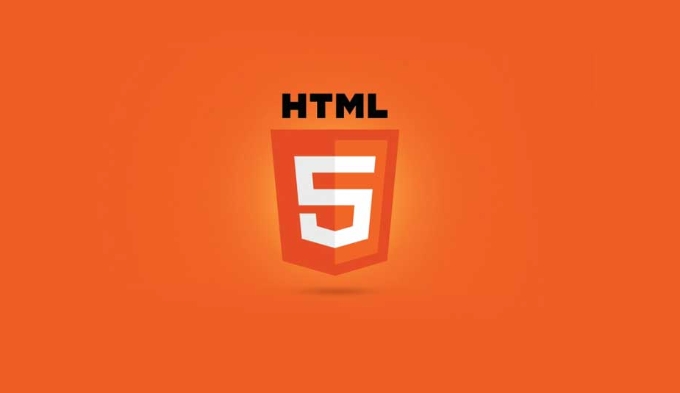The <progress> tag of HTML5 can directly implement the web page progress bar. 1. The basic usage is to set the value and max attributes, such as

Progress bars are very common in web pages, such as uploading files, loading content, or displaying task completion. HTML5 provides a native tag <progress></progress> which can easily implement this feature without the need for additional CSS or JavaScript.
 ` tag." />
` tag." />Basic usage: a simple progress bar
The easiest way to use the <progress></progress> tag is to set value and max properties. For example:
<progress value="30" max="100"></progress>
This displays a progress bar with the current progress of 30/100. The browser will automatically render the fill part of the progress bar according to the scale. If the max attribute is omitted, the default maximum value is 1, so you can also write it like this:
 ` tag." />
` tag." /><progress value="0.3"></progress>
However, for the sake of being clear and readable, it is recommended to write max="100" clearly, especially when dealing with percentage logic, which is more intuitive.
Use "undefined" status when uncertain progress
Sometimes you don't know when the task will be completed, such as waiting for the server to respond. At this time, you can use the <progress> tag without value to indicate "processing", but the specific progress is unknown:
 ` tag." />
` tag." /><progress max="100"></progress>
Some browsers will display a dynamic animation indicating that the progress is being updated. This state is suitable for loading or waiting phases.
Custom style: Make progress bar look better
Although the default progress bar is already available, different browser styles are different and are usually simple. You can beautify it with CSS, but be careful about browser compatibility.
For example, if you want to change the background of the progress bar to gray and the progress part to blue, you can write it like this:
progress {
appearance: none;
width: 100%;
height: 20px;
border-radius: 5px;
background-color: #ddd;
}
progress::-webkit-progress-bar {
background-color: #ddd;
border-radius: 5px;
}
progress::-webkit-progress-value {
background-color: #4caf50;
border-radius: 5px;
} It should be noted that different browsers support different progress bar pseudo-elements. WebKit kernels (such as Chrome) support ::-webkit-progress-bar and ::-webkit-progress-value , while Firefox requires ::-moz-progress-bar .
If you want the styles to be uniform, it is recommended to reset the default style and customize all states.
Use scenarios and precautions
- Upload file : Dynamically update
valuein combination with JavaScript to reflect the upload progress in real time. - Form filling progress : The multi-step form prompts the user how many steps have been completed.
- Game loading resources : Display resource loading progress to improve user experience.
Need to note:
- Don't abuse the progress bar. If the task is completed instantly, adding the progress bar will confuse the user.
- If complex animations or interactions are required, consider using CSS to simulate progress bars.
- Mobile browsers all support
<progress></progress>, but may perform abnormally in older IE versions, so you need to pay attention to compatibility issues.Basically that's it. Using
<progress></progress>to implement the progress bar is quite straightforward, the key is to understand its attributes and style control methods. - Mobile browsers all support
The above is the detailed content of Displaying progress bars with the HTML5 `` tag.. For more information, please follow other related articles on the PHP Chinese website!

Hot AI Tools

Undress AI Tool
Undress images for free

Undresser.AI Undress
AI-powered app for creating realistic nude photos

AI Clothes Remover
Online AI tool for removing clothes from photos.

Clothoff.io
AI clothes remover

Video Face Swap
Swap faces in any video effortlessly with our completely free AI face swap tool!

Hot Article

Hot Tools

Notepad++7.3.1
Easy-to-use and free code editor

SublimeText3 Chinese version
Chinese version, very easy to use

Zend Studio 13.0.1
Powerful PHP integrated development environment

Dreamweaver CS6
Visual web development tools

SublimeText3 Mac version
God-level code editing software (SublimeText3)

Hot Topics
 What Does H5 Refer To? Exploring the Context
Apr 12, 2025 am 12:03 AM
What Does H5 Refer To? Exploring the Context
Apr 12, 2025 am 12:03 AM
H5referstoHTML5,apivotaltechnologyinwebdevelopment.1)HTML5introducesnewelementsandAPIsforrich,dynamicwebapplications.2)Itsupportsmultimediawithoutplugins,enhancinguserexperienceacrossdevices.3)SemanticelementsimprovecontentstructureandSEO.4)H5'srespo
 Is H5 a Shorthand for HTML5? Exploring the Details
Apr 14, 2025 am 12:05 AM
Is H5 a Shorthand for HTML5? Exploring the Details
Apr 14, 2025 am 12:05 AM
H5 is not just the abbreviation of HTML5, it represents a wider modern web development technology ecosystem: 1. H5 includes HTML5, CSS3, JavaScript and related APIs and technologies; 2. It provides a richer, interactive and smooth user experience, and can run seamlessly on multiple devices; 3. Using the H5 technology stack, you can create responsive web pages and complex interactive functions.
 H5 and HTML5: Commonly Used Terms in Web Development
Apr 13, 2025 am 12:01 AM
H5 and HTML5: Commonly Used Terms in Web Development
Apr 13, 2025 am 12:01 AM
H5 and HTML5 refer to the same thing, namely HTML5. HTML5 is the fifth version of HTML, bringing new features such as semantic tags, multimedia support, canvas and graphics, offline storage and local storage, improving the expressiveness and interactivity of web pages.
 Understanding H5 Code: The Fundamentals of HTML5
Apr 17, 2025 am 12:08 AM
Understanding H5 Code: The Fundamentals of HTML5
Apr 17, 2025 am 12:08 AM
HTML5 is a key technology for building modern web pages, providing many new elements and features. 1. HTML5 introduces semantic elements such as, , etc., which enhances web page structure and SEO. 2. Support multimedia elements and embed media without plug-ins. 3. Forms enhance new input types and verification properties, simplifying the verification process. 4. Offer offline and local storage functions to improve web page performance and user experience.
 HTML5: The Building Blocks of the Modern Web (H5)
Apr 21, 2025 am 12:05 AM
HTML5: The Building Blocks of the Modern Web (H5)
Apr 21, 2025 am 12:05 AM
HTML5 is the latest version of the Hypertext Markup Language, standardized by W3C. HTML5 introduces new semantic tags, multimedia support and form enhancements, improving web structure, user experience and SEO effects. HTML5 introduces new semantic tags, such as, ,, etc., to make the web page structure clearer and the SEO effect better. HTML5 supports multimedia elements and no third-party plug-ins are required, improving user experience and loading speed. HTML5 enhances form functions and introduces new input types such as, etc., which improves user experience and form verification efficiency.
 HTML5: The Standard and its Impact on Web Development
Apr 27, 2025 am 12:12 AM
HTML5: The Standard and its Impact on Web Development
Apr 27, 2025 am 12:12 AM
The core features of HTML5 include semantic tags, multimedia support, offline storage and local storage, and form enhancement. 1. Semantic tags such as, etc. to improve code readability and SEO effect. 2. Simplify multimedia embedding with labels. 3. Offline storage and local storage such as ApplicationCache and LocalStorage support network-free operation and data storage. 4. Form enhancement introduces new input types and verification properties to simplify processing and verification.
 HTML5 and H5: Understanding the Common Usage
Apr 22, 2025 am 12:01 AM
HTML5 and H5: Understanding the Common Usage
Apr 22, 2025 am 12:01 AM
There is no difference between HTML5 and H5, which is the abbreviation of HTML5. 1.HTML5 is the fifth version of HTML, which enhances the multimedia and interactive functions of web pages. 2.H5 is often used to refer to HTML5-based mobile web pages or applications, and is suitable for various mobile devices.
 The Connection Between H5 and HTML5: Similarities and Differences
Apr 24, 2025 am 12:01 AM
The Connection Between H5 and HTML5: Similarities and Differences
Apr 24, 2025 am 12:01 AM
H5 and HTML5 are different concepts: HTML5 is a version of HTML, containing new elements and APIs; H5 is a mobile application development framework based on HTML5. HTML5 parses and renders code through the browser, while H5 applications need to run containers and interact with native code through JavaScript.






